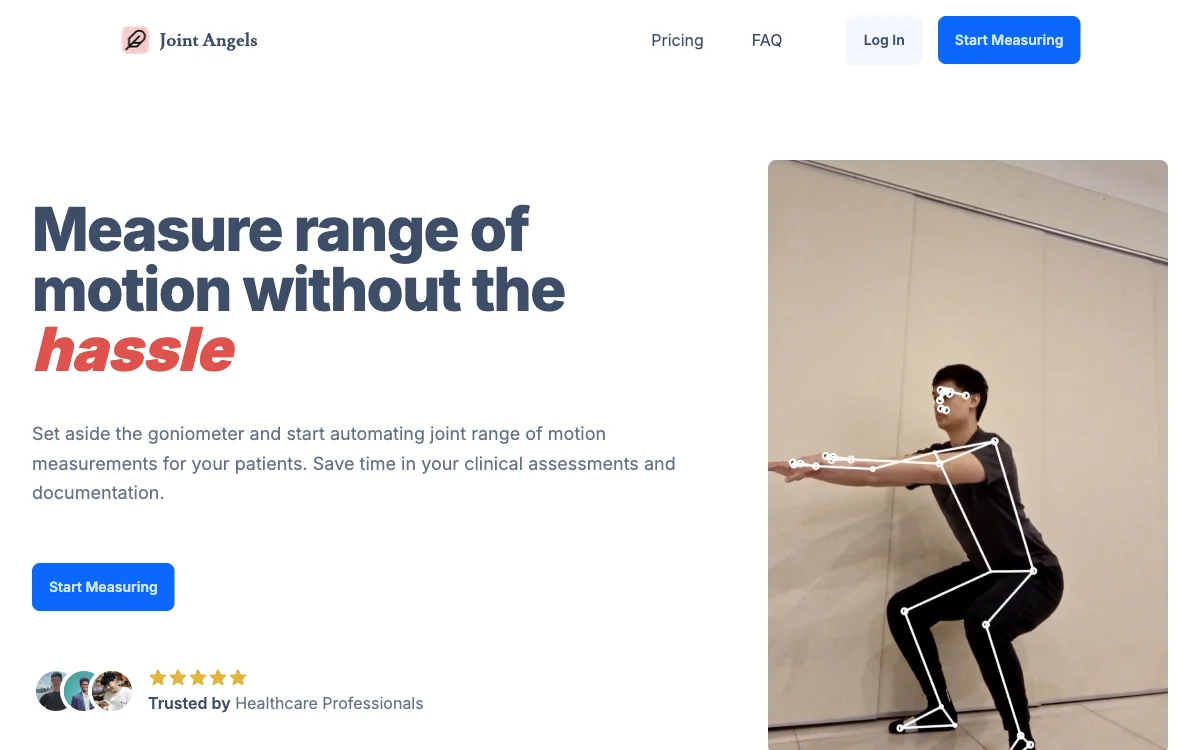Joint Angels revolutionizes the way healthcare professionals measure joint range of motion (ROM). By automating the measurement process, it eliminates the need for traditional goniometers, allowing for simultaneous capture of multiple joint ROMs and dynamic movements. This not only saves valuable time but also enhances the accuracy of clinical assessments and documentation.
With Joint Angels, setting up is as simple as positioning a camera or webcam. Patients can perform movements in any position, and the tool considers three-dimensional space to provide live angles, minimum and maximum angles, and access to historical measurements. This feature-rich tool is designed to complement the clinical judgment of healthcare professionals, not replace it.
Developed by a physiotherapist who understands the challenges of balancing patient care with thorough documentation, Joint Angels aims to save time, reduce stress, and increase focus on patient care. It's a game-changer for clinicians looking to upgrade their clinical practice with efficient, accurate, and easy-to-use technology.
Trusted by healthcare professionals, Joint Angels has received positive feedback for its ability to make measuring joint ROM a breeze, especially for neurological and musculoskeletal patients. Its accuracy and ease of use have significantly improved workflows for physiotherapists, making it an essential tool in modern clinical practice.
Joint Angels offers a clinician package that includes a range of motion measurement tool, access to live joint angles, minimum and maximum joint angles, historical measurements, and email support. With a one-time payment for lifetime access, it's an investment in efficiency and quality patient care.
Disclaimer: Joint Angels is designed as a measurement and documentation aid for healthcare professionals. It does not replace clinical judgment or aid in diagnosis. Healthcare providers should rely on their professional training, experience, and clinical reasoning when interpreting results and making clinical decisions. This tool is intended to complement, not substitute, comprehensive patient evaluation.

